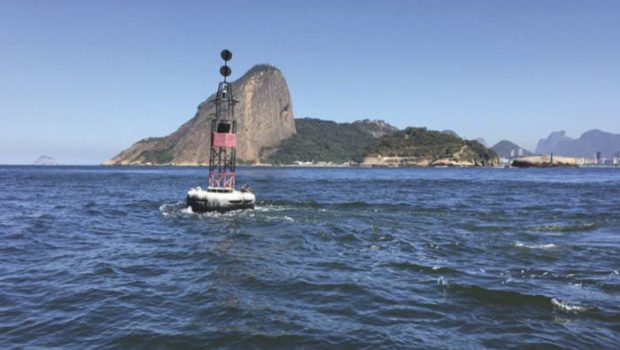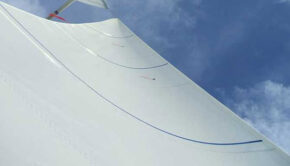How Important is Current?
Published on May 14th, 2018
When the US Sailing Team prepared for the Rio 2016 Olympic Games held in the notoriously current-ridden Guanabara Bay, David Dellenbaugh had the arduous task of developing the playbook used by the sailors in each of the course areas.
Dellenbaugh shares some of those lessons in this report from his newsletter of how-to tips for racing sailors: Speed & Smarts.
When you’re racing in current, this is almost always a factor at the starting line and while you are rounding marks. But how important is it from a strategic point of view? The challenge in Rio, and any other venue where you race in current, is to base your strategic planning on an accurate assessment of how current will affect the race.
At the Olympics we had very good data about current in Guanabara Bay, but this did not mean we always followed it. There were many races where it was much more important to play the wind, for example. Here’s a discussion of some factors that could affect the relative importance of current.
‘Fast’ boats vs. ‘Slow’ boats
The current is more important strategically for boats that are going slowly than for boats that are going fast. When a boat is traveling slowly through the water (i.e. when the current velocity is a greater percentage of her boatspeed), she will spend more time sailing in whatever current she has. That makes it more important for her to be in better current.
There are two primary reasons why a boat may be going fast or slow. The first is wind velocity. In light air boats travel slowly, so current is usually a critical strategic factor. In heavy air, however, boats go much faster, which means current has a relatively smaller effect on their performance. The lighter the wind, the more likely it is that current will matter.
The second reason why boats may travel at different speeds is because they are different types of boats. At the Olympics there were a bunch of ‘fast’ boats including the skiffs, cats and boards. There were also some ‘slow’ boats including the Laser, Radial and Finn. The strategic value of current was different depending on boat type.
The skiffs, for example, were very quick and therefore didn’t care so much about current. The Lasers, on the other hand, were much slower and therefore looked for even the slightest differences in current across the course. On certain Rio race courses, it was not uncommon for one side to be favored if you were racing a fast boat and the other side to be favored in slow boats, for precisely this reason.
Upwind vs. Downwind
The value of sailing in current also varies by wind angle. As a strategic factor, current is generally more critical upwind than downwind. That’s because when you are in better current on a beat, you also usually have more wind velocity (because the better current creates additional pressure). In other words, you get a double benefit by finding better current when sailing upwind.
The same is not true downwind. When sailing in ‘better’ current on a run, you actually have less wind velocity (because the current detracts from the wind pressure). So your choice is: 1) better current with less wind, or 2) worse current with more wind. This makes the decision less critical – even if you don’t find the best current you will at least have a little more wind.
This extra wind velocity is especially helpful for fast boats, which generally benefit more from small increases in pressure. That’s why in Rio the faster boats (skiffs, cats, boards) spent less time worrying about current on runs and more time looking for pressure.
Wind or Current?
Which strategic factor will be more critical in your next race or leg – wind or current? Weigh the value of each, and don’t place undue strategic emphasis on a variable that has only a small chance of affecting your race.
• ‘Wind Race’ – The wind should be your strategic focus when it is strong and/or variable compared to current. In these conditions there is a lot more to gain (or lose) by playing the wind correctly (or incorrectly).
It’s likely to be a ‘wind race’ when: the current is weak; the current is even across the course (so there is not much to gain on either side); the wind is strong (so the boats go fast relative to the current); or the wind is shifty and puffy (which means gains or losses due to the wind could be quite large).
• ‘Current Race’ – The current should be your strategic focus when it is relatively strong and more variable than the wind. In this condition there is a lot to gain (or lose) by playing the current correctly (or incorrectly).
It’s likely to be a ‘current race’ when: the wind is light (and the current has a correspondingly large influence); the wind direction and velocity are fairly even across the course (so there’s not much to gain on either side); the current is strong; or the current is variable across the course (so there are gains and losses to be made).









 We’ll keep your information safe.
We’ll keep your information safe.